Evernote As A Neural Prosthetic

What I mean by a “neural prosthetic” is a supplemental tool that aids your brain. Over the past year, I’ve found that Evernote fits that description fairly well, and that it aids useful thought in many ways.
The collection of items that passes your attention daily includes: Wikipedia articles, posts on HackerNews or other aggregators, research papers, interesting projects, videos, slide decks, contacts, places, receipts, etc. It’s a staggering amount and variety of information.
You can remember quite a number of items and if you train your memory that number will become significant. Of course, pen-and-paper or plain text digital notebooks are a good way to supplement memory. However in my experience, this isn’t enough. How can you reference ephemeral information (like web pages) in a concrete way? How will you recall a majority of what you learned two months from now? How can you improve the introspection and past-learning of future- you?
For me, this calls for a system that can persist a wide variety of information, that is accessible from every computing device, that has excellent search/tag/categorize functionality, and that I am willing to use everyday. Evernote is one such system.
Here’s an example of my notes about two hours of browsing around I did after work:
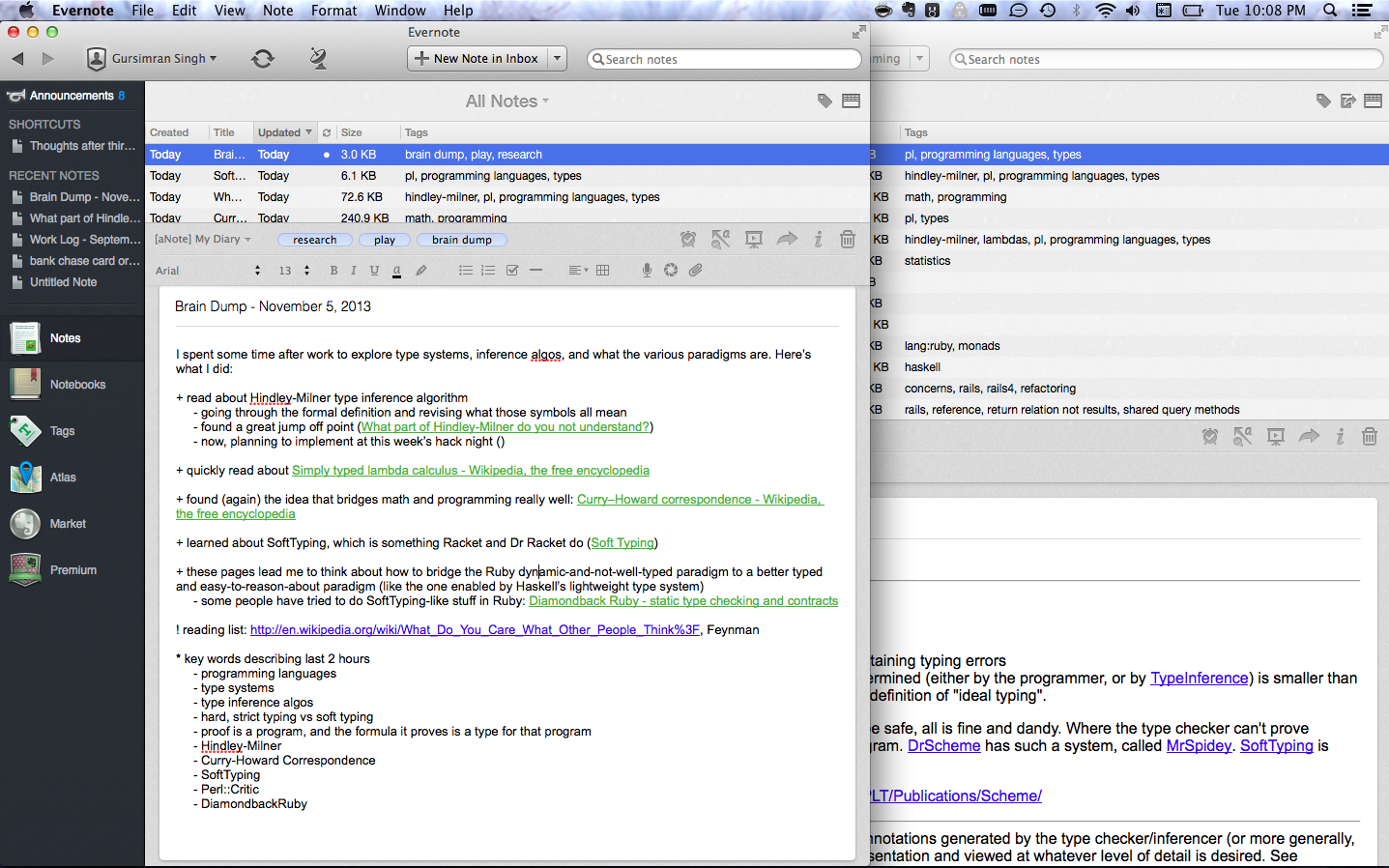
Shown above in the main window is a note I created, and alongside is another window I used for searching notes. The note consists of:
-
individual activities, prefixed by single character tags. It’s a basic scheme described here:
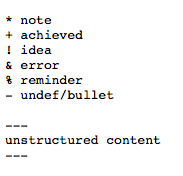
- inter-note links (in green). These are links to other notes, which will all always exist. I made them using the Evernote Web Clipper.
- plain old hyperlinks (in blue). There are non-essential links to the web, mostly for future research.
- list of key words and phrases describing the total activity. I don’t do this often and I usually use a lot of tags to achieve this, but for me it’s a useful way to remember things.
Notes like the above are easy to hammer out. Especially using the little menu bar helper:
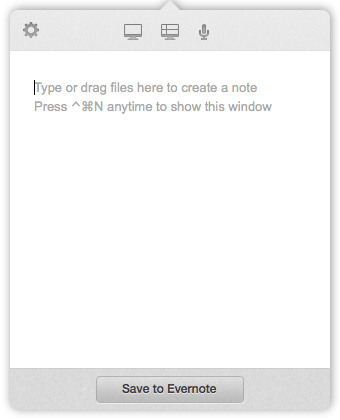
So, this enables persistent notes that are interlinked and also sufficiently
tagged to allow for future searching. Here’s how I might search things I’ve
noted about haskell:
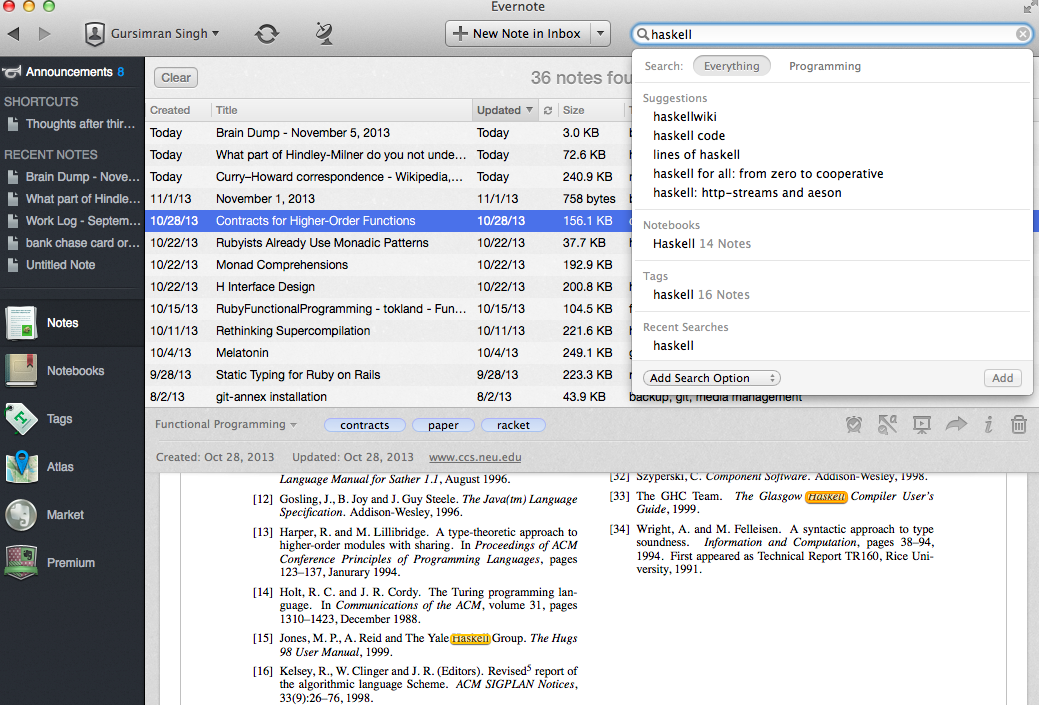
The above finds notebooks, tags, and full-text search matches for “haskell” across everything in my Evernote. It even OCR’s any research papers I’ve clipped and supports search with keyword highlighting in the PDF! The result window at the bottom is showing a view into a PDF with “Haskell” highlighted in that paper’s references. Incidentally, I didn’t know about those references before I started writing this, but it makes sense considering the topic.
Categorization is the final piece. You can make notebooks of notes and stacks of notebooks. This is for largely static grouping of ideas, versus tags that allow flexible groupings. Here’s how I did it:
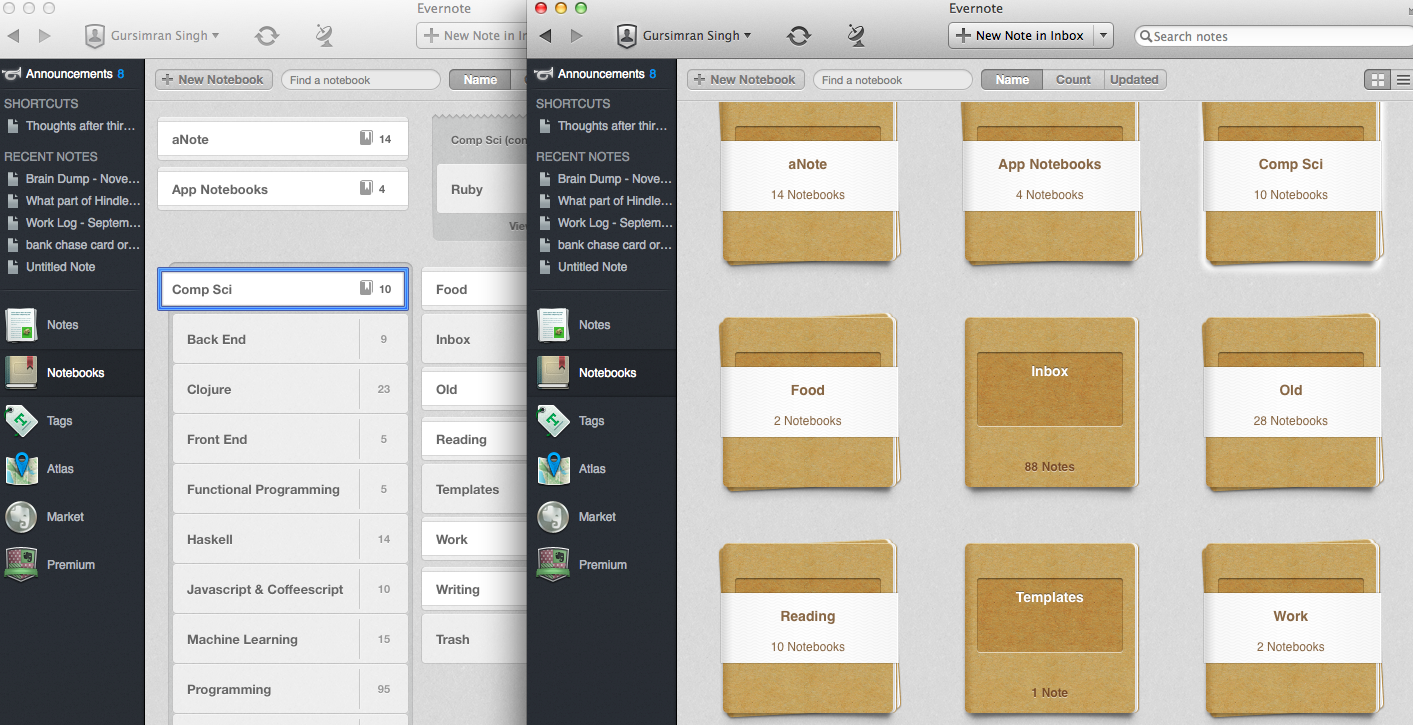
The left window shows the contents of the Comp Sci stack and the right window show all the stacks.
Persistence, ease of use, searching, tagging, categorization… your own world of information to explore however you want. And it gets even more useful with everyday use. I’ve made it a habit to keep a work log every day as a separate note, and it has paid for itself for instance in time saved remembering past fixes to problems.
I’m still learning how to optimize my learning for best return on time spent, but Evernote really speeds it along. You should try it!